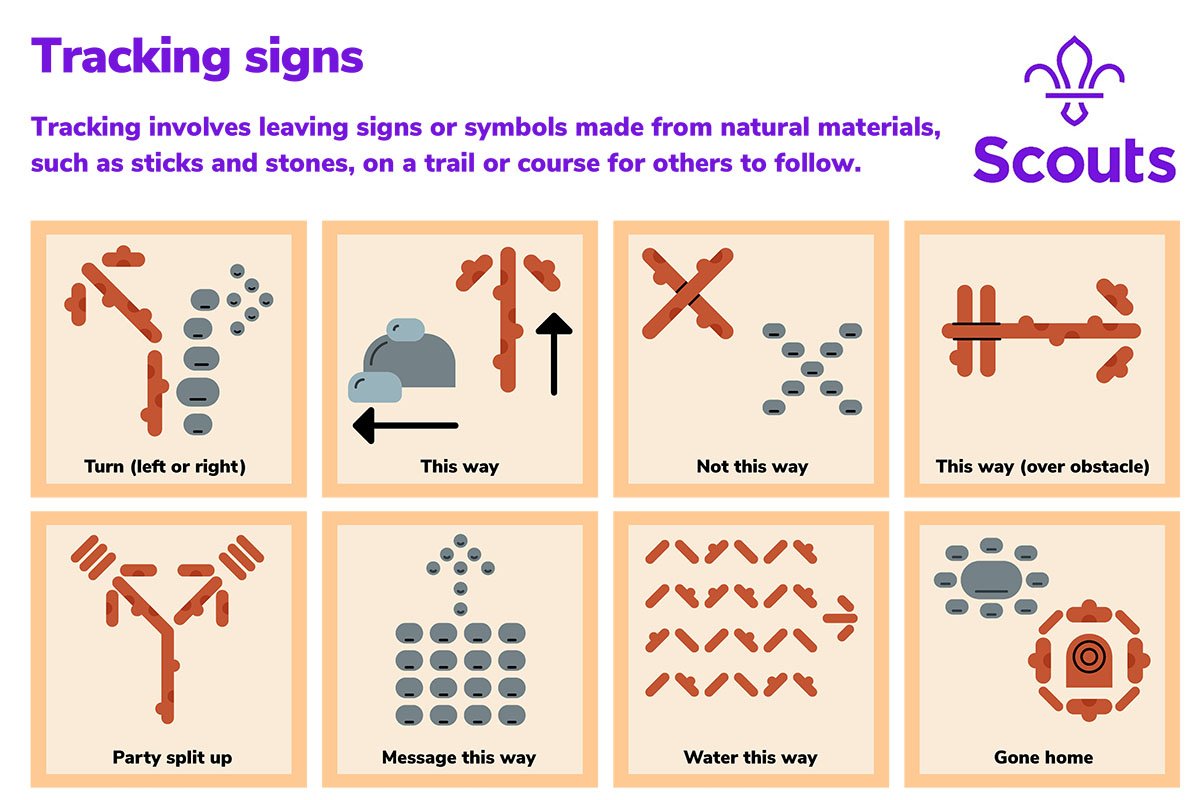

Tracking is an ancient skill that has been used by humans for thousands of years—hunter-gatherers used tracking skills to find food in past times or to find their way back along a route.
Tracking has always been an important scouting skill too. Scouts learn about leaving tracking symbols to give directions to others and sometimes to warn of dangers ahead. They also learn how to track people, which is a useful skill if someone is lost or missing.
In his new book Do Your Best: How to be a Scout, Bear Grylls writes about how tracking is a useful survival skill. For example, if you are lost as a group and someone goes ahead to seek help or to look for food, he or she can use a set of symbols to help herself find her way back to the group or help the group find her.
“Scouts are quick thinking and resourceful, so they make tracking symbols out of whatever natural materials they find, from sticks and stones to long grass, and even scratching messages into soil,” writes Bear.
The scouts use internationally recognized tracking signs made from sticks or stones to show a trail for others to follow. This comes in handy when you need to be found. Here are some examples:

If you are leaving symbols, make sure that they suit the ground and weather conditions and think about how long they might last. For instance, will the rain wash away a message in the dirt, or will the wind blow away some sticks?
Tips for Tracking a Person
You can also use tracking skills to follow someone’s trail. Robert Baden-Powell, the founder of scouting, was a skilled tracker in the army, and in his book, Scouting for Boys, published in 1908, he wrote: “Let nothing be too small for your notice; a button, a match, a cigar ash, a feather, or a leaf might be of great importance. A scout must not only look to his front but also to either side and behind him. He must have ‘eyes at the back of his head’.”
Scouts learn how to track people who may be lost or missing to find out which way they have gone. In his new book, here are some things that Bear Grylls says you should look for.
Footprints, boot, or shoe prints

If you find footprints, first make sure they are not yours or belonging to a member of your group. Do you know what style and size of shoe the person you are tracking was wearing? If the footprint is wet, the person may still be nearby. If there’s no mud, soil, or snow to check for footprints, look for areas of grass that may have been walked on.
Stopping places
Where would you stop to rest if you were the person you’re tracking? Look for signs that the person stopped there. For example, signs could include food wrappers or boot prints side by side, showing that they were sitting down.
Clothing
What was the person wearing? Is there any torn clothing on branches? Have they dropped anything along the way?

Describe the person
Give anyone you come across an accurate description of the person you’re tracking. Someone may have seen them or even given them directions.
Finally, use your resources. Robert Baden-Powell writes about how he once found his way at night by feeling his own tracks: “sometimes with my hands and sometimes through the soles of my shoes which had worn very thin; and I never had any difficulty in finding the line.”
Do Your Best: How to be a Scout by Bear Grylls is now available in the UK, Ireland, and Australia/New Zealand, and it will be published in April 2024 in the US. Buy it here.









